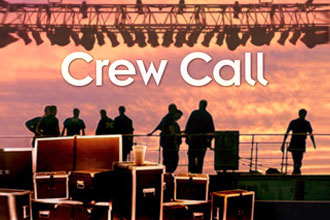Searching for Internet Cheese
 In my day job, I answer a lot of people’s questions about audiovisual and virtual reality technology. In fact, lately, that’s really all I seem to be doing. And to find those answers quickly, especially when it comes to determining things like part numbers and dimensions, I turn to the source that most people use: the World Wide Web.
In my day job, I answer a lot of people’s questions about audiovisual and virtual reality technology. In fact, lately, that’s really all I seem to be doing. And to find those answers quickly, especially when it comes to determining things like part numbers and dimensions, I turn to the source that most people use: the World Wide Web.
Now, I have been using the web since its very first iterations, back when HTML was just a concept and we were all migrating from bulletin board systems (BBSs) to the internet. In 1993, I can distinctly remember being dressed down by our owner in our national sales meeting over wasting everybody’s time with a presentation on the future internet that suggested that we create a website. In no uncertain terms, he told me that the World Wide Web was a fad, that all anybody did was put their brochure on their website and that he was not going to buy every employee a computer just so they could “surf the web.”
By the end of that decade, I was working for Extron, where the early development of the website was made a high-level corporate priority. Extron had already been one of the few companies to truly embrace the CD-ROM as a method of distributing product information and they saw the web as the next logical step. All of their leadership felt that making this information easily available to dealers was one of the most important functions that the sales and marketing department had. I was impressed then with their attitude about it and I still am. When I am designing a system or show, I often depend on the Extron website for fast access to the latest information about their products. And I also hear many of their dealers tout their website as one of the things that makes them a leader in their field. These facts have been well known (and I believe, generally accepted) in the industry for the last 20 years.
 So I’m truly dismayed that the current trend in consolidation in our industry seems to have damaged the usability of the audiovisual industry’s websites. Some of my very favorite manufacturers have recently been acquired by much larger industry firms, who have attempted to wrap these products into their general distribution lines. In doing so, they have made appropriate information much more difficult to find. And I hope, by this article, to alert them to the idea that the successful manufacturers in this industry do not necessarily have a better mousetrap. They have simply created better ways for the mouse to find the cheese.
So I’m truly dismayed that the current trend in consolidation in our industry seems to have damaged the usability of the audiovisual industry’s websites. Some of my very favorite manufacturers have recently been acquired by much larger industry firms, who have attempted to wrap these products into their general distribution lines. In doing so, they have made appropriate information much more difficult to find. And I hope, by this article, to alert them to the idea that the successful manufacturers in this industry do not necessarily have a better mousetrap. They have simply created better ways for the mouse to find the cheese.
So, speaking as one of the mice, and as somebody who has to help a lot of other mice find cheese, let me offer a few comments on the current trend in industry websites.
Mice don’t give a damn about style if it makes the cheese harder to find. The current trend in websites is to move to the “one-page” design style, with minimalist menus that simply hop you up and down the page, often with some type of “floating” menu design. It’s really pretty and if I were a millennial “surfing” that site on my smart phone, I might find it OK. But manufacturers should pay attention to the idea that the people who specify their products find this truly annoying for a couple of reasons. First, because it makes it hard to find details like product numbers and spec sheets. And second, because it makes it nearly impossible to print PDF portions of that webpage to fit into a proposal. And while you may get great customer comments on how pretty your website is, it does not represent how people buy things in this industry. Note also that this is also not how any of the truly successful websites in e-commerce — like Amazon — work.
Mice like consistency. If you acquire a company, when you merge them into an operation, one of the most important considerations should be how dealers use their existing website or what they find wrong with it. Be especially alert to this if you are acquiring companies whose products serve different vertical markets than the ones that you have experience with. For instance, I work with a lot of architects and system designers. I am recently seeing a major shift in several product lines that they specify based almost entirely on the fact that information is easier to get from one manufacturer’s website than another.
A hungry mouse needs cheese now, not later after you have explained how your new website works to them. If it isn’t self-evident where to get product dimensions, specifications and PDF spec sheets, then your website is not working. The destruction of a manufacturer website that designers rely on for information, just in order to fit it into your existing company website, is a mistake.
Clients often check the designer’s recommendations on the web. If it’s hard for them to find information confirming the mouse’s opinion, they will doubt the mouse.
My friend Gary Kayye, who has spent most of the last three decades being one of the industries top proponents of the use of the internet, has a saying: “If you can’t find a product on the web, does it really exist?” And in many ways, he’s right. In these days of instant information and gratification, products without good published information become invisible.
And I just can’t recommend an invisible product.





